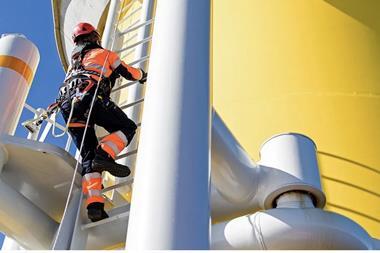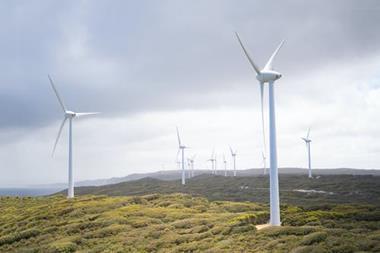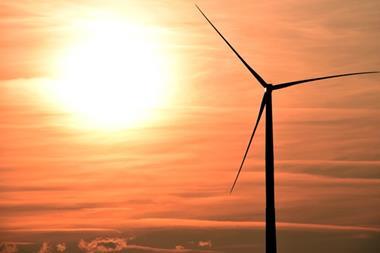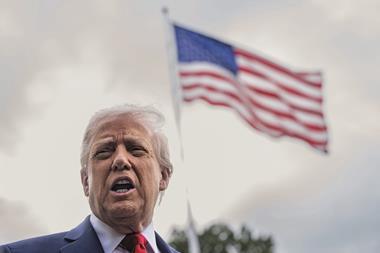There have been major disruptions for investors in wind power recently, as three major players pulled out of projects. Christopher Walker examines what this means and whether the sector has reached its peak
It has been a turbulent time for investors in wind. Last week, shares in Siemens, one of the world’s biggest makers of wind turbines, plunged by almost 40% in Germany after reports emerged that it was going to need a bailout from the German government. This week, BP revealed a US$540m (€509m) write-down on two projects off the coast of New York, because of higher-than-expected costs. On Wednesday, shares in the world’s biggest wind power company Ørsted fell 20% after it told investors it had cancelled its massive Ocean Wind I and II schemes in the States, citing high inflation, rising interest rates and supply-chain bottlenecks.
What is going on?
The unifying element in the three recent decisions is that global offshore wind developers now face significant financial headwinds thanks to rising interest rates and the surge in raw material prices, both of which have driven project costs higher.
“Offshore wind infrastructure is a capital-intensive industry, and therefore requires long-term planning and investment decisions, which means it cannot be immune to the overall economy,” says Joost Bergsma, CEO and managing partner of Glennmont, the clean-energy arm of investment manager Nuveen. “Wider economic shocks have impacted key value drivers for our sector – things like supply chain and debt financing costs, which in turn impact the returns on our investments.”
Glennmont has a partnership with Ørsted and last month acquired 50% of Ørsted’s Gode Wind 3 Offshore Wind Farm in Germany.
A key problem is many developers entered government subsidy agreements when costs were much lower. This is why Sweden’s Vattenfall scrapped plans for a giant offshore windfarm off the Norfolk coast, and the latest UK wind auction in September failed to attract any bids at all.

The industry is scrambling to change the existing formulae. Ørsted CEO Mads Nipper suggested this week: “This industry does not need to be in a crisis. We are of the opinion that it all hinges on being realistic about [what] power prices need to be.”
Similarly, BP’s head of low carbon energy, Anja-Isabel Dotzenrath told a recent energy-transition summit: “The way the policy works, the supply chain, the permitting, is not catching up with the growth of this sector. There’s a fundamental reset needed in permitting, security of permitting… and how the sector is supposed to grow.”
Jon Phillips, CEO of the Global Infrastructure Investor Association, which represents major institutional investors and fund managers, is supportive of this reasoning. “The recent government offshore wind auction shows that infrastructure investors – no matter what their commitment to ESG or impact investing – will not commit private capital where there is a clear danger of either a poor or no return.
“Governments need to adjust their auction parameters so that investors – after assessing all the risks and ESG criteria – can invest with reasonable confidence that they will deliver a fair return for the ultimate beneficiaries, which include millions of ordinary pension savers.”
The case for UK wind starts to crumble
These concerns have major implications. Wind has been given a starring role in most developed economies’ paths to net zero. This is certainly the case in the UK, where wind power is the largest source of renewable energy.
The UK now has more than 11,000 wind turbines and a total installed capacity of 30 gigawatts (GW), split equally between onshore and offshore, according to Renewable UK. In the first three months of 2023, UK wind generated more electricity (32.4%) than gas-fired power stations for the first time (31.7%). And the UK government has committed to a major expansion of offshore capacity to 50GW by 2030.
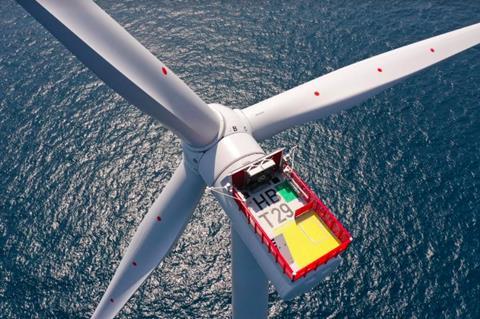
Central to that goal is the Hornsea offshore wind project, the largest wind farm in the world, where the main investors are Ørsted, along with AXA and Credit Agricole. Ørsted’s recent decision pullback in the US has naturally cast doubts on its commitment in the UK to develop the third phase.
Barry Norris, the CEO of Argonaut Capital Partners, who has been an outspoken critic of further UK wind development, suggests: “Building the additional offshore wind capacity planned, with capital costs now running at an estimated £5m (€5.74) per megawatt, will cost an estimated £180bn equivalent to 8% of GDP.” This extra capacity would equate to theoretical generation capacity of 159 terawatt hour, which is around half of current demand in the UK.
Norris says his analysis of half-hour system settlement prices since the beginning of 2021 and the corresponding market share of wind within these 47,000 discrete time periods “suggests wind generation is already significantly above its optimal UK market share”. He says: “Extremely high power prices occur during low wind market share periods and low and sometimes negative power prices at high market shares during windy periods.”
He goes on to argue: “Excess wind energy that cannot be used or stored is essentially wasteful economic activity. It is the weather rather than the number of wind turbines installed that is already the constraining factor – and we already have a glut of capacity when the wind blows. Adding more wind generation will only make UK power prices more volatile with weather-dependent surpluses or gluts.”
According to Norris, the UK’s National Grid has paid wind farms, mostly in Scotland, over £1.4bn since 2010 to reduce their output on windy days, a payment that is justified as compensation for lost subsidy but with the result that the wind farm makes more when not generating than when selling to customers. “The cost of this is borne by the consumer and will increase with even more volatile power prices that will result from more wind power being built,” he says.
Norris suggests that current battery technology is “unable to offer an industrial scale solution for longer than a few hours”. He cites the building of the world’s largest lithium-ion industrial battery in Trafford, Manchester. “Costing £750m, the battery would store just 2 GWh – enough to power Britain for little more than three minutes.” His conclusion is that “the prospect of building 50 GW of offshore wind by 2030 now looks dead in the water”.
Should investors abandon wind?
Frederic Blanc-Brude, director of EDHEC Infrastructure and Private Assets Research Institute, says Norris’ reasoning “is supported by our own research”. He also agrees that the UK offshore wind plans are “starting to look overly optimistic”. Blanc-Brude says: “If you integrate the costs of storage and the costs of development into your business case, then it is hard for wind to stack up in a country like the UK where there is already such significant capacity.”uLike Norris, Blanc-Bride considers “the ultimate key to the wind profitability conundrum is storage”, although he thinks there is room for “a more optimistic view of the evolution of technology here”.

But he pushes back on the suggestion that this is the time for investors to abandon wind. “Yes, it’s a riskier business now, but, like other renewables sectors, this is an area where investors can still make a lot of money. Yes, it’s true it is harder for new developments to make sense, but adjustments to government pricing mechanisms will change this. And adjustments should be made because wind is a vital component in decarbonisation. The tax payer should subsidise development. In the end either users or tax payers pay for infrastructure services.”
This could be about to happen. Yves-Maurice Radwan, head of green deal infrastructure at Commerz Real, says: “There will be an increase in UK subsidies, probably announced soon – maybe next week – as this is the only way out of the current situation.”
For Blanc-Brude, the UK has specific circumstances that would make this necessary. “In our infraMetrics database, the equity risk premia of wind power in the UK have increased from 400bps to 500bps since 2019. That’s the premia investors require for the risk they take on the investment.” But, he concludes, “it could be different in other markets. Each has its own framework and level of saturation.”





